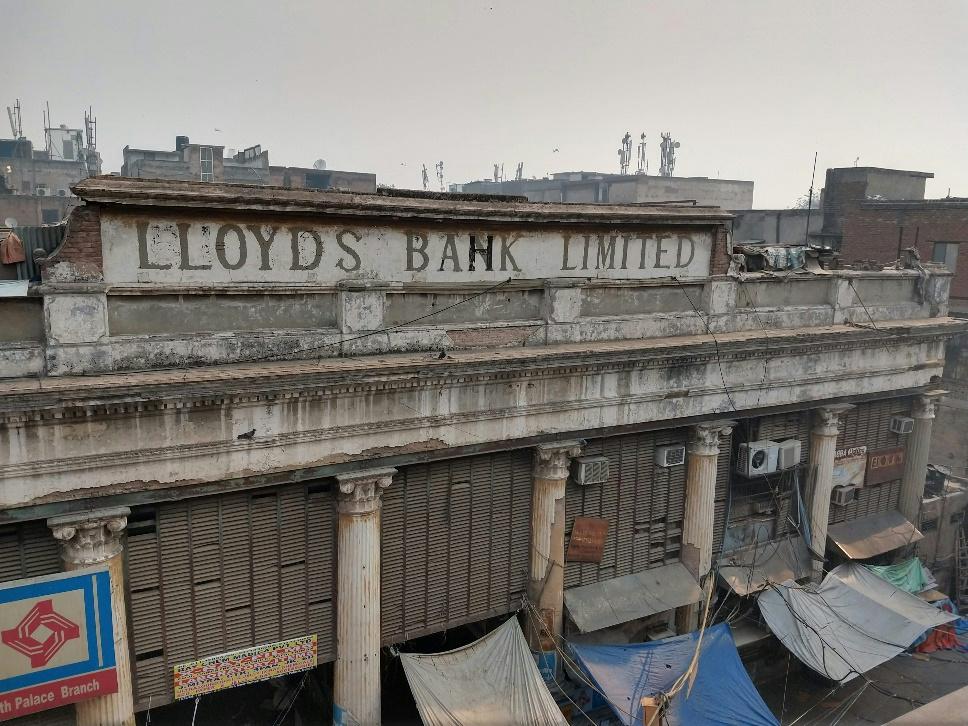An Electricals Market or The Palace of A Mercenary Queen ?
Thousands make a beeline today for the Bhagirath Palace Market in Chandni Chowk to fulfill their needs of wholesale lighting equipment, switchboards, wires, heaters, chandeliers and what not. However, about two centuries ago, those making the beeline for the same place were no less than royals, nobles, fighters and power brokers
For the Bhagirath Palace of today was originally the haveli of a “small dainty woman with delicate features” who often held the balance of power in late 18th century Delhi through her powerful mercenary army.
She was Begum Samru.

Born as Farzana in 1753 to Latif Ali Khan, a nobleman of Arabian origin, she lost her father early. Soon they were driven out from his home ( in Kutana, Meerut) by a son from another wife. The mother-daughter duo found their way to Chawri Bazar in Shahjahanabad – the epicentre of nautch girls of Mughal city. The mother passed away as well and Farzana began her life under the watchful care of a tawaif .
The girl came into her own, became famous for her performances and ( at the age of 14) eventually caught the eye of Walter Reinhard Sombre – a (45 year old ) European adventurer and head of a mercenary army. The two became inseparable and eventually married. When Sombre passed way , his 82 European officers and 4000 soldiers the Emperor Shah Alam II to install his Begum as his successor. In 1781, she converted to Christianity adopting the name Joanna
The feisty Begum Samru ( ‘Samru’ corrupted from ‘Sombre’) saved the life and honour of the Mughal Emperor not once but twice. She came to his rescue against the Rohilla Ghulam Qadir in 1787 and drove him out for which she was bestowed with the title of Zeb-un-Nisa ( jewel among the women). In 1788 she again saved him the blushes when Najaf Quli Khan attacked for which she was honored with Farzand-i-Azizi ( most beloved daughter).
It was in this background that the Begum was given the site of a Mughal Garden, Khas Bagh in 1806 by Akbar Shah II. Here, in midst of lush greenery, she built a beautiful, four storeyed European style mansion with elegant Greek columns (probably the first time these columns
were used in Delhi). The vicinity to Red Fort showed the kind of power that the warrior queen commanded. She regularly used to host parties for British officials here.


The wheels of time turned. Begum passed away in 1837 and the property passed on to her adopted son Dyce Sombre who eventually left for England selling his estate to the newly formed Delhi Bank in 1847. In 1857, the site witnessed heavy crossfire between Indian soldiers and British which resulted in the death of the bank’s manager Mr Beresford and his family

In the post 1857 aftermath, the palace was taken over by British government serving as Imperial Bank and Lloyd’s Bank in succession
In 1922, it was sold to Munshi Shiv Narain who eventually sold it to Lala Bhagirath Mal in 1940. Lala ji rechristened it to Bhagirath Palace and the name survives to this day
In the 80 years hence the palace and the gardens around it transformed to the lighting and electricals market which we know today .
A section of the mansion has a branch of Central Bank of India running while the rest has umpteen number of shops selling their goods encroaching every bit of it. The garden is long gone with every square bit of it serving to “light up” the electrical needs of Delhi-walas
A dusty, rundown board on its entry proclaims it to be a “heritage”. The treatment of the place is anything but.

Its famous Greek columns are in a dire state and , in absence of any preservation, are a health hazard with material falling off from places

The memory of “Lloyds Bank Limited” survives on its frontage but that of the dancing girl who saved the Mughal Emperor multiple times and built the largest church of North India ( in Sardhana) – fades like the plaster on its walls everyday
